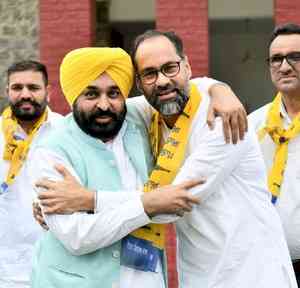Women Form the Largest Untapped Pool for the Manufacturing Sector
Author(s): City Air NewsMumbai, April 19, 2017: The FICCI Panel on ‘Growing Influence of Women in Steel’ threw up some interesting findings. The panel formed part of the day’s proceedings at India Steel 2017 organised by Federation of...

Mumbai, April 19, 2017: The FICCI Panel on ‘Growing Influence of Women in Steel’ threw up some interesting findings. The panel formed part of the day’s proceedings at India Steel 2017 organised by Federation of Indian Chambers of Commerce and Industry (FICCI) here. The two-day event concludes tomorrow.
The all-women panel was moderated by Ms Vinita Bimbhet, Immediate Past President, FICCI Ladies Organization (FLO). Panellists included Ms Rita Singh, Chairman and Managing Director, MESCO Steel; Ms Soma Mandal, Director (Commercial), Steel Authority of India Limited; Ms Samita Shah, Group Head (Corporate Finance and Risk Management), Tata Steel; and Ms.Yashika Singh, Economist, Rio Tinto India.
Setting the stage for the deliberations, Ms Bhimbet quoted an old Chinese proverb that “Women hold up half the sky.” She hoped that the more women get into manufacturing, the more women this industry will attract.
“Men don’t like women in the steel business,” was the view of Ms Rita Singh, CMD, MESCO Steel. She herself saw no difference between a man or a woman in the workplace; the focus has to be on the job that needs to be done. “Work is everything,”
she said. She went on to narrate her experiences of heading a manufacturing organisation. Her journey as an entrepreneur taught her the ropes of the industry. She went into all aspects of the industry, and began to make changes where required. She felt that success comes “with a good team and a good leader”, and the key is to find the right person.
Ms Soma Mandal from SAIL talked about bridging the gender gap. Her view was that today women are seen in banking, IT and finance, but are missing in manufacturing.
Manufacturing forms 16 per cent of the country’s GDP; we cannot afford to neglect 50 per cent of the population if we want to make India the manufacturing hub of the world.
Participation of women impacts the culture of the industry and benefits productivity, efficiency and employee engagement. “If you want the world to follow us, you should have an inclusive policy in society,” she said. “So, bridging the gender gap is not only a social obligation but a strategic imperative.”
Speaking on the issue of ‘women employment to women empowerment’, Ms Samita Shah of Tata Steel recalled her experience of a swanky legal office in New York that did not have a ladies’ washroom. “The bias is widespread,” she observed. “If your
customers are women and you don’t have women employees you lose connect,” she stated. More importantly, her opinion was that the policies that are aimed to be women friendly are actually millennial-friendly. Increasingly, men are availing of policies instituted under the diversity umbrella. “Today the world requires you to be agile, creative, innovative, and the new generation wants all of that.” Women must be given an enabling environment which allows them to grow. This calls for sensitising the work force, and having friendly policies such as flexible work hours and working from home, that are suitable to today’s requirements. She also felt that role models and sponsors will help in a big way in bringing women into the manufacturing force.
Ms Yashika Singh, economist, Rio Tinto spoke about increasing the role of women in manufacturing. “In spite of our passion, the role of women has not been increasing,” she lamented. This is not only an Indian problem, it extends across the world. Post globalisation, women began entering manufacturing assembly lines, performing repetitive tasks. But then to meet the uncertain market, companies began contracting these jobs to third party providers and kept a core group within the company
management. This core group is all-men, she observed. So automatically there are very few role models and hence women do not make it to permanent roles. “Employing women is not just a social imperative. It comes with a huge economic cost,” she said, talking about the demographic dividend. This gap needs to be exploited successfully if we want growth because it brings a competitive advantage.
Ms Bimbhet thanked the panellists and called upon the industry to take a look at the points raised.

 cityairnews
cityairnews 














